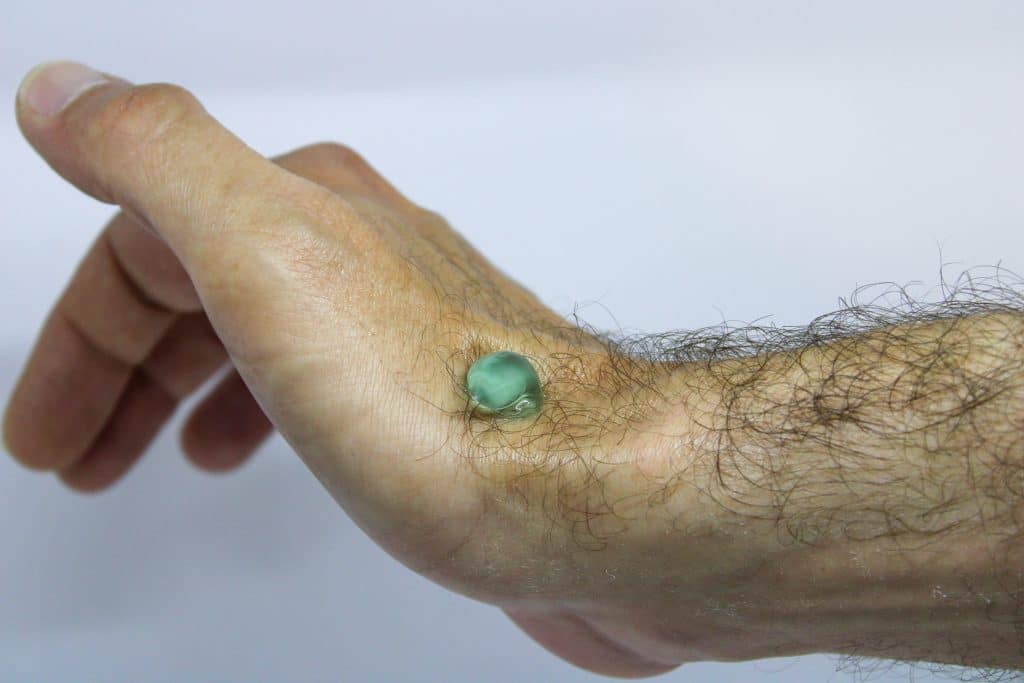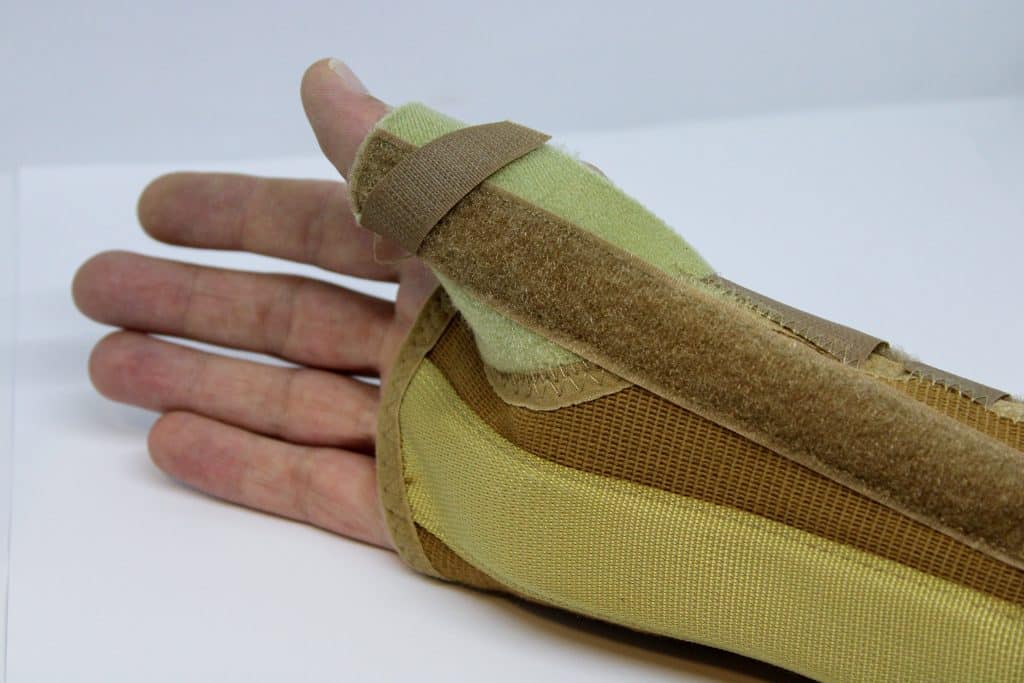The Hidden Risks of a Scaphoid Fracture: How To Avoid Long-Term Complications
Imagine you’re skiing, playing a quick pick-up game, or simply taking a walk when you suddenly catch an edge or trip and start to fall. Instinctively, you reach out to catch yourself, landing hard on your outstretched hand. Hours later, your wrist is swollen and aching. Even if your symptoms don’t seem that serious, you might have a scaphoid fracture.
A scaphoid fracture is a type of broken wrist. It occurs when the scaphoid bone, one of the small bones near the base of your thumb, breaks. This small but important bone plays a significant role in the motion and stability of your wrist joint. Unfortunately, its location and poor blood supply mean it can take longer to heal than other bones, making timely and proper treatment essential. With proper care, you can make a complete recovery from a scaphoid fracture and avoid long-term wrist issues.
What is a scaphoid fracture?
A scaphoid fracture is a break in your scaphoid bone, a small bone in the wrist near the base of your thumb. This type of break usually results after a fall onto an outstretched hand, a collision in a contact sport, a car accident, or other trauma. Because the scaphoid bone does not have great blood flow, it can take longer than other breaks to heal and is more likely to have complications.
Wrist Bone Anatomy

Your wrist is made up of a collection of eight carpal bones connected to the bones of the forearm, which are called the ulna and radius. The scaphoid bone connects the four bones on the distal side near the fingers to the bones on the proximal side near the forearm. When you break your scaphoid bone, which is on the same side as your radius and thumb, you could also suffer from a radial fracture.
The scaphoid bone has three parts. Which part of the bone you break can greatly impact both the treatment method and healing timeline.
- Distal pole: the end closest to your fingers
- Waist: the middle part of the scaphoid; a large majority of breaks occur here
- Proximal pole: the end closes to your forearm; proximal breaks generally take longer to heal and are more likely to have complications due to poor blood flow to this area
Broken Wrist Symptoms
Scaphoid fractures do not always present with severe symptoms, so it can be challenging to know when you’ve broken this bone. Some of the most common scaphoid fracture symptoms include:
- Pain or swelling, especially along the thumb side of the wrist
- Tenderness
- Increased pain when pinching, grasping, pulling
- Inability to move your wrist
- Bruising or discoloration
- Deformity or the presence of a new bump
Because these symptoms can occur to varying degrees, some people with scaphoid fractures assume they have a wrist sprain versus a fracture. However, delaying treatment can cause long-term problems. If you have a wrist injury and the pain lasts more than a day, see a hand and wrist specialist.
Fracture Diagnosis
The scaphoid is the most commonly fractured carpal bone. It accounts for about 60 percent of carpal fractures and 10 percent of all hand fractures. Despite their commonality, they can be a difficult break to diagnose. This is because a significant portion of these fractures do not initially show up on X-rays. They may also have symptoms that are not as severe as what you might imagine with a broken bone.

To check for a broken scaphoid, your wrist pain specialist will perform a physical exam and take diagnostic imaging. They will press on the “anatomic snuffbox” (the hollow that forms between the thumb and the wrist when you make a thumbs-up) to check for pain or tenderness. This is a helpful way to test for a possible scaphoid (navicular) fracture since some of these breaks do not show up well or at all on X-rays. These hidden or “occult” fractures may not be visible until several weeks later using follow-up imaging.
Other terms your hand and wrist specialist might use to describe your break are displaced and non-displaced:
- Non-displaced: breaks where the bone pieces did not move far enough to be out of alignment
- Displaced: breaks where the pieces of bone moved enough to be misaligned or for a gap to form around the fracture
In addition to an X-ray, you may need to get a CT scan or MRI. Imagine helps diagnose fracture type, severity, and location as well as check for surrounding tissue damage.
Scaphoid Fracture Treatment
Depending on the severity of your break, you may or may not need surgery for a scaphoid bone fracture.

Non-surgical treatment for a scaphoid fracture that’s mild to moderate typically requires you to wear a splint for 3 to 5 weeks or a cast for 6 to 8 weeks. If you’ve fractured the proximal end of your scaphoid, you may be in a cast for around 3 months. Because the proximal part of the bone doesn’t have a good blood supply, your cast will likely include your thumb and extend up past your elbow.
More severe breaks may also require a non-surgical procedure called a closed reduction to realign broken bones. In this case, you’ll be given local anesthetic, sedatives, or general anesthesia to help with pain during the realignment process.
If you have a displaced fracture and need surgery, your hand surgeon will realign the bones during your operation in an open reduction. This will typically be followed by a procedure called an internal fixation. In this procedure, your surgeon will use plates and screws or pins and wires to hold the bones in position. In some cases, percutaneous pinning or fixation may also be an option. This allows surgical implements to be implanted through the skin.
If your bone is severely displaced or not healing as well as it should, you may need a bone graft. In bone grating, your surgeon will insert additional bone tissue, rejoining the pieces using internal fixation.
You may be prescribed the use of a device called a bone stimulator to help heal your fracture. This small medical appliance delivers low-intensity ultrasonic or pulsed electromagnetic waves to stimulate healing. Your specialist will also likely recommend physical therapy to help you regain strength and range of motion.
Complications
If the scaphoid is broken, the tiny blood vessels that supply it with nutrients can be damaged. Since blood supply is necessary to heal a fracture and parts of the scaphoid have poor blood supply, complications with these fractures tend to be more common. For this reason, proper diagnosis and timely treatment are integral to avoiding scaphoid fracture complications.
This injury’s most common complications include:
- Malunion: when broken bones don’t line up correctly while healing
- Nonunion: when broken bones don’t grow back together fully or at all; scaphoid nonunions are more likely with missed or delayed diagnosis
- Acute compartment syndrome (ACS): a build-up of pressure in muscles that stops blood from getting to tissue; can cause permanent muscle and nerve damage
- Avascular necrosis (osteonecrosis): when blood flow is cut off to the bone; painful, affects mobility, and generally worsens over time; more likely with proximal breaks
- Arthritis: pain, swelling, stiffness, and deformity; more likely with nonunion and avascular necrosis
If you’ve injured your hand or wrist and want to ensure you receive the proper diagnosis and treatment plan, please contact us or comment below.
Leave a Reply